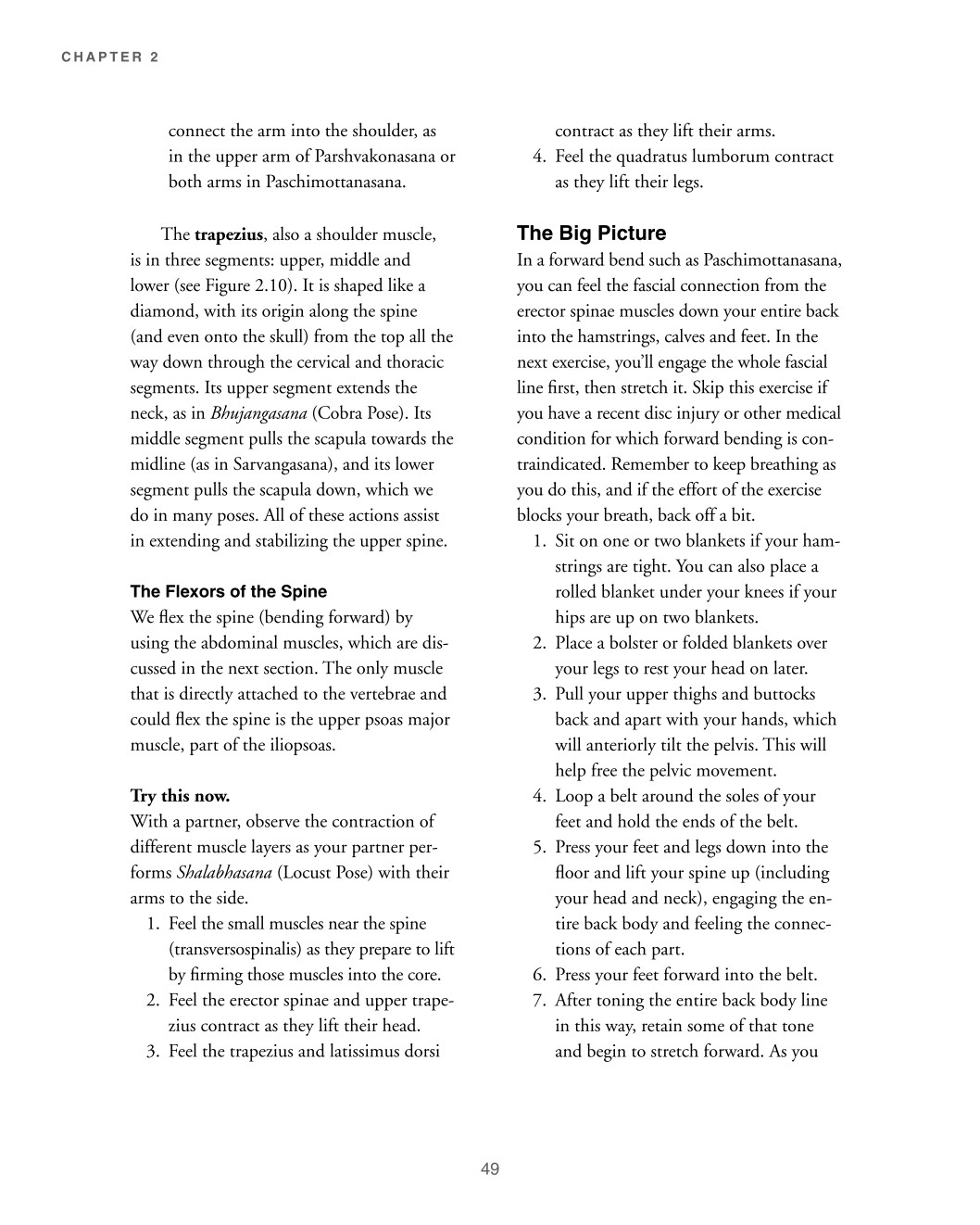

CHAPTER 2
connect the arm into the shoulder, as in the upper arm of Parshvakonasana or both arms in Paschimottanasana. The trapezius, also a shoulder muscle, is in three segments: upper, middle and lower (see Figure 2.10). It is shaped like a diamond, with its origin along the spine (and even onto the skull) from the top all the way down through the cervical and thoracic segments. Its upper segment extends the neck, as in Bhujangasana (Cobra Pose). Its middle segment pulls the scapula towards the midline (as in Sarvangasana), and its lower segment pulls the scapula down, which we do in many poses. All of these actions assist in extending and stabilizing the upper spine. The Flexors of the Spine We flex the spine (bending forward) by using the abdominal muscles, which are dis- cussed in the next section. The only muscle that is directly attached to the vertebrae and could flex the spine is the upper psoas major muscle, part of the iliopsoas. Try this now. With a partner, observe the contraction of different muscle layers as your partner per- forms Shalabhasana (Locust Pose) with their arms to the side. 1. Feel the small muscles near the spine (transversospinalis) as they prepare to lift by firming those muscles into the core. 2. Feel the erector spinae and upper trape- zius contract as they lift their head. 3. Feel the trapezius and latissimus dorsi
contract as they lift their arms. 4. Feel the quadratus lumborum contract as they lift their legs. The Big Picture In a forward bend such as Paschimottanasana, you can feel the fascial connection from the erector spinae muscles down your entire back into the hamstrings, calves and feet. In the next exercise, you’ll engage the whole fascial line first, then stretch it. Skip this exercise if you have a recent disc injury or other medical condition for which forward bending is con- traindicated. Remember to keep breathing as you do this, and if the effort of the exercise blocks your breath, back off a bit. 1. Sit on one or two blankets if your ham- strings are tight. You can also place a rolled blanket under your knees if your hips are up on two blankets. 2. Place a bolster or folded blankets over your legs to rest your head on later. 3. Pull your upper thighs and buttocks back and apart with your hands, which will anteriorly tilt the pelvis. This will help free the pelvic movement. 4. Loop a belt around the soles of your feet and hold the ends of the belt. 5. Press your feet and legs down into the floor and lift your spine up (including your head and neck), engaging the en- tire back body and feeling the connec- tions of each part. 6. Press your feet forward into the belt. 7. After toning the entire back body line in this way, retain some of that tone and begin to stretch forward. As you
49